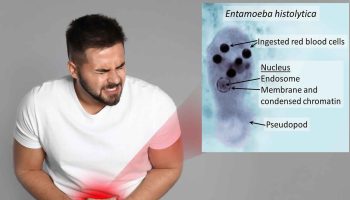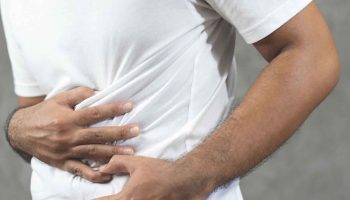Breast milk jaundice
Jaundice also known as hyperbilirubinemia, is a condition that causes your baby’s skin to turn yellow in the first few days after birth. You may also notice that the sclera (white parts) of the baby’s eyes are yellow. The yellow color of the skin and sclera in newborns with jaundice comes from a build up of bilirubin. Small to medium increases in bilirubin are normal in newborns and will not hurt your baby. Very high levels of bilirubin can cause hearing loss, seizures and brain damage. There are two common problems that may occur in newborns receiving breast milk.
- Breast milk jaundice: Jaundice seen after the first week of life in a breastfed baby who is otherwise healthy.
- Breastfeeding failure jaundice also called “starvation jaundice”: Jaundice that occurs when your baby does not get enough breast milk, instead of from the breast milk itself.
Breast milk jaundice typically presents in the first or second week of life and usually spontaneously resolves even without discontinuation of breastfeeding 1. However, breast milk jaundice can persist for 8-12 weeks of life before resolution 2. Infants with breast milk jaundice often have higher peaks of serum bilirubin and an overall slower decline than infants without it, leading to the longer resolution time 3. Usually pathologic causes of persistent, unconjugated hyperbilirubinemia are ruled out before a diagnosis of breast milk jaundice can be made.
The frequency of breast milk jaundice within the United States is thought to be 20-30% for newborns from 3 to 4 weeks of age whose feeding is predominantly via breastfeeding 1. About 30-40% of breastfed infants are expected to have bilirubin levels greater than or equal to 5mg/dL with about 2-4% of exclusively breastfed infants having bilirubin levels above 10 mg/dL in week 3 of life 4. International studies in countries such as Turkey and Taiwan found that 20-28% of newborns had breast milk jaundice present at four weeks of age. Total serum bilirubin levels were also noted to be greater than or equal to 5mg/dL in these cases 5. The remaining international frequency of breast milk jaundice is not extensively reported but is thought to be similar to the frequency in the United States. No reports exist demonstrating a sex predilection.
In most cases of breastfeeding jaundice and breast-milk jaundice, doctors recommend that the mother continue breastfeeding. Early, frequent, unrestricted breastfeeding helps to eliminate bilirubin from baby’s body. Bilirubin exits the body in the infant’s stools, and because your milk has a laxative effect, breastfeeding frequently will result in lots of soiled diapers and thus, lower bilirubin levels. Your newborn should breastfeed a minimum of eight times per day.
Treatment is not necessary for breast milk jaundice unless the total serum bilirubin level of the infant is greater than 20mg/dL 1. If this occurs, the recommendation is for phototherapy treatment. Phototherapy is the use of light to convert bilirubin molecules into water-soluble isomers that can be excreted by the body. If the total serum bilirubin level remains below 12 mg/dL, the recommendation is to continue breastfeeding of the infant and to expect resolution of jaundice by 12 weeks of age. If the total serum bilirubin level is between 12-20 mg/dL and further investigation shows no evidence of hemolysis, the recommendations are the same 2. When the bilirubin is greater than 20 mg/dL, a brief 24-hour cessation of breastfeeding often leads to a sharp decline in the bilirubin levels.
What is breast milk jaundice levels?
About 30-40% of breastfed infants are expected to have bilirubin levels greater than or equal to 5mg/dL with about 2-4% of exclusively breastfed infants having bilirubin levels above 10 mg/dL in week 3 of life 4. International studies in countries such as Turkey and Taiwan found that 20-28% of newborns had breast milk jaundice present at four weeks of age. Total serum bilirubin levels were also noted to be greater than or equal to 5 mg/dL in these cases 5.
Breast milk jaundice cause
The exact cause of breast milk jaundice has not been determined 1. Most of the proposed causes involve factors present in the human breast milk itself. Another area of investigation has been the potential genetic mutations present in the affected newborns. Breast milk jaundice may run in families. It occurs just as often in males and females and affects about a third of all newborns who get only their mother’s milk.
Some factors in human breast milk that may be related to the cause of breast milk jaundice include pregnane-3a,20ß-diol, interleukin IL1ß e IL6, ß-glucuronidase, epidermal growth factor, and alpha-fetoprotein 6. The presence of pregnane-3a,20ß-diol is thought to inhibit the conjugation of bilirubin that allows for its excretion. ß-glucuronidase is an enzyme naturally present in the body that deconjugates bilirubin in the intestinal brush border, leading to increased unconjugated bilirubin levels 2. Studies have shown that the activity of this enzyme within formula milk is negligible, but it is considerable in human breast milk 7. Interleukin IL1ß e IL6 is thought to have a cholestatic effect that leads to hyperbilirubinemia 6. Epidermal growth factor is present in higher concentrations in human breast milk and in the serum of strictly breastfed infants. The thinking is that this substance enhances intestinal resorption of bilirubin and reduces intestinal motility in the neonatal period, leading to increased unconjugated bilirubin levels 2. The serum of babies with breast milk jaundice often has elevated levels of alpha-fetoprotein. The mechanism underlying this is not yet understood.
Several studies have shown that mutations in the coding region of the UGT1A1 gene increase the risk of developing breast milk jaundice. Mutations in this gene’s regulatory region are known to cause Crigler-Najjar and Gilbert syndrome, two syndromes known to cause persistent hyperbilirubinemia 5.
Bilirubin is a yellow pigment that is produced as the body recycles old red blood cells. The liver helps break down bilirubin so that it can be removed from the body in the stool. Newborns have markedly increased bilirubin production as compared to their adult counterparts secondary to a higher blood volume and hemoglobin concentration and a shorter red blood cell lifespan. This bilirubin production is in its unconjugated form, which is not water soluble and must, therefore, be conjugated into its water-soluble form before excretion from the body in the stool. This process takes place within the liver and specifically within the hepatocyte itself by the hepatic enzyme, bilirubin uridine diphosphate glucuronosyltransferase (bilirubin-UGT). The UGT1A1 gene codes production of this enzyme, and therefore those with genetic mutations in this gene are unable to conjugate bilirubin properly. This enzyme is also significantly less active in neonates than adults, leading to less efficient conjugation. After conjugation and excretion from hepatocytes within bile, the bilirubin travels to the small intestine where it converts to stercobilin by gut flora and gets excreted via the stool.
Infants have a decreased concentration of gut flora needed for this process compared to adults, leading to a higher concentration of bilirubin remaining within the intestinal tract. The enzyme ß-glucuronidase will deconjugate bilirubin remaining within the intestine. After this process, it is returned to the liver for re-conjugation via the portal circulation. This process is known as “enterohepatic circulation.” Newborns have significantly higher activity of the enzyme ß-glucuronidase as well as a more permeable gut wall, leading to overall higher concentrations of unconjugated bilirubin and increased enterohepatic circulation 2.
Identification of the substances within breast milk and the genetic mutations that maybe causes or risk factors for breast milk jaundice interfere with the healthy metabolism and excretion of bilirubin at the various stages are covered above.
Breast milk jaundice symptoms
True breast milk jaundice manifests after the first 4-7 days of life. A second peak in serum bilirubin level is noted by age 14 days. Your baby’s skin, and possibly the whites of the eyes (sclerae), will look yellow. Breast milk jaundice typically presents in the first or second week of life with an unconjugated hyperbilirubinemia in an otherwise healthy infant whose nutritional intake is predominantly via breastfeeding. These infants exhibit normal weight gain with normal production of urine and stools 2. A total serum bilirubin level above 1.5 mg/dL is considered elevated at this time, but most infants will not appear jaundiced unless the level is above 5 mg/dL. If the infant does appear jaundiced, this yellowish discoloration of their skin and/or sclera is typically first noted in the face and then proceeds to the infant’s trunk and extremities.
Breast milk jaundice complications
The most feared complication of all neonatal hyperbilirubinemia including breast milk jaundice is kernicterus or chronic bilirubin encephalopathy. This concern is due to its potential for permanent neurodevelopmental delay, and is a rare complication of breast milk jaundice and occurs in less than 2% of breastfed term infants who have no evidence of hemolytic anemia 8.
Breast milk jaundice diagnosis
Evaluation of an infant presenting with hyperbilirubinemia suspicious for breast milk jaundice must include methods to rule out other pathologic causes of hyperbilirubinemia. First, both unconjugated and conjugated bilirubin levels must be measured. Conjugated bilirubin levels less than 1 mg/dL or 20% of the total bilirubin level are considered normal. Conjugated bilirubin levels in excess of this indicate other disorders such as biliary atresia, neonatal hepatitis, and disorders of bilirubin excretion. Both breast milk jaundice and hemolytic anemias cause elevated unconjugated bilirubin levels. Hemolytic causes for hyperbilirubinemia, such as ABO incompatibility, G6PD deficiency, and hereditary spherocytosis must be ruled out.
Laboratory tests that may be done include:
- Bilirubin level (total and direct)
- Coombs’ test
- Blood smear to look at blood cell shapes and sizes
- Blood type
- Complete blood count (measurement of hemoglobin and hematocrit)
- Reticulocyte count (number of slightly immature red blood cells)
- Genetic testing
In some cases, a blood test to check for glucose-6-phosphate dehydrogenase (G6PD) may be done. G6PD is a protein that helps red blood cells work properly.
These tests are done to be sure that there are no other, more dangerous causes of the jaundice.
Another test that may be considered consists of stopping breastfeeding and giving formula for 12 to 24 hours. This is done to see if the bilirubin level goes down. This test is not always necessary.
Physiologic jaundice usually manifests after the first 24 hours of life. This can be accentuated by breastfeeding, which, in the first few days of life, may be associated with suboptimal milk and suboptimal caloric intake, especially if milk production is delayed. This is known as breastfeeding jaundice. Jaundice that manifests before the first 24 hours of life should always be considered pathologic until proven otherwise. In this situation, a full diagnostic workup with emphasis on infection and hemolysis should be undertaken.
In clinical practice, differentiating between physiologic jaundice from breast milk jaundice is important so that the duration of hyperbilirubinemia can be predicted. Identifying the infants who become dehydrated secondary to inadequate breastfeeding is also important. These babies need to be identified early and given breastfeeding support and formula supplementation as necessary. Depending on their serum bilirubin concentration, neonates with hyperbilirubinemia may become sleepy and feed poorly.
The clinician should consider other non-hemolytic causes of prolonged hyperbilirubinemia such as Crigler-Najjar or Gilbert syndrome but need not investigate for them unless jaundice does not resolve by 12 weeks of age. Galactosemia and hypothyroidism have also been identified as causes of unconjugated hyperbilirubinemia and should be ruled out via newborn screening tests 2.
Breast milk jaundice treatment
Treatment is not necessary for breast milk jaundice unless the total serum bilirubin level of the infant is greater than 20mg/dL 1. If this occurs, the recommendation is for phototherapy treatment. Phototherapy is the use of light to convert bilirubin molecules into water-soluble isomers that can be excreted by the body. If the total serum bilirubin level remains below 12 mg/dL, the recommendation is to continue breastfeeding of the infant and to expect resolution of jaundice by 12 weeks of age. If the total serum bilirubin level is between 12-20 mg/dL and further investigation shows no evidence of hemolysis, the recommendations are the same 2. When the bilirubin is greater than 20 mg/dL, a brief 24-hour cessation of breastfeeding often leads to a sharp decline in the bilirubin levels.
Treatments to lower the level of bilirubin in your baby’s blood may include:
- Light therapy (phototherapy). Your baby may be placed under a special lamp that emits light in the blue-green spectrum. The light changes the shape and structure of bilirubin molecules in such a way that they can be excreted in both the urine and stool. During treatment, your baby will wear only a diaper and protective eye patches. Light therapy may be supplemented with the use of a light-emitting pad or mattress.
- Exchange transfusion. Rarely, when severe jaundice doesn’t respond to other treatments, a baby may need an exchange transfusion of blood. This involves repeatedly withdrawing small amounts of blood and replacing it with donor blood, thereby diluting the bilirubin and maternal antibodies — a procedure that’s performed in a newborn intensive care unit.
Breast milk jaundice prognosis
Overall, the prognosis of infants with breast milk jaundice is excellent as it is a self-limited condition that usually resolves around 12 weeks of age 9.
Breast milk jaundice in otherwise healthy full-term infants rarely causes kernicterus (bilirubin encephalopathy). Case reports suggest that some breastfed infants who suffer from prolonged periods of inadequate breast milk intake and whose bilirubin levels exceeded 25 mg/dL may be at risk of kernicterus 10. Note that kernicterus is a preventable cause of cerebral palsy. Another group of breastfed infants who may be at risk of complications is late preterm infants who are nursing poorly.
Kernicterus may occur in exclusively breastfed infants in the absence of hemolysis or other specific pathologic conditions. Distinguishing between breastfeeding jaundice and breast milk jaundice is important, because bilirubin-induced encephalopathy occurs more commonly in breastfeeding jaundice. Near-term infants are more likely to manifest breastfeeding jaundice because of their difficulty in achieving adequate nursing, greater weight loss, and hepatic immaturity.
- Bratton S, Stern M. Breast Milk Jaundice. [Updated 2019 Jan 1]. In: StatPearls [Internet]. Treasure Island (FL): StatPearls Publishing; 2019 Jan-. Available from: https://www.ncbi.nlm.nih.gov/books/NBK537334[
][
][
][
][
]
- Preer GL, Philipp BL. Understanding and managing breast milk jaundice. Arch. Dis. Child. Fetal Neonatal Ed. 2011 Nov;96(6):F461-6.[
][
][
][
][
][
][
][
]
- Auerbach KG, Gartner LM. Breastfeeding and human milk: their association with jaundice in the neonate. Clin Perinatol. 1987 Mar;14(1):89-107.[
]
- Ullah S, Rahman K, Hedayati M. Hyperbilirubinemia in Neonates: Types, Causes, Clinical Examinations, Preventive Measures and Treatments: A Narrative Review Article. Iran. J. Public Health. 2016 May;45(5):558-68.[
][
]
- Maruo Y, Morioka Y, Fujito H, Nakahara S, Yanagi T, Matsui K, Mori A, Sato H, Tukey RH, Takeuchi Y. Bilirubin uridine diphosphate-glucuronosyltransferase variation is a genetic basis of breast milk jaundice. J. Pediatr. 2014 Jul;165(1):36-41.e1.[
][
][
]
- Soldi A, Tonetto P, Varalda A, Bertino E. Neonatal jaundice and human milk. J. Matern. Fetal. Neonatal. Med. 2011 Oct;24 Suppl 1:85-7.[
][
]
- el-Kholy MS, Halim HY, Marzouk AH. Beta-glucuronidase and hyperbilirubinemia in breast-fed versus formula-fed babies. J Egypt Public Health Assoc. 1992;67(3-4):237-48.[
]
- Muchowski KE. Evaluation and treatment of neonatal hyperbilirubinemia. Am Fam Physician. 2014 Jun 01;89(11):873-8.[
]
- Breast milk jaundice. https://emedicine.medscape.com/article/973629-overview[
]
- Harris MC, Bernbaum JC, Polin JR, Zimmerman R, Polin RA. Developmental follow-up of breastfed term and near-term infants with marked hyperbilirubinemia. Pediatrics. 2001 May. 107(5):1075-80.[
]





